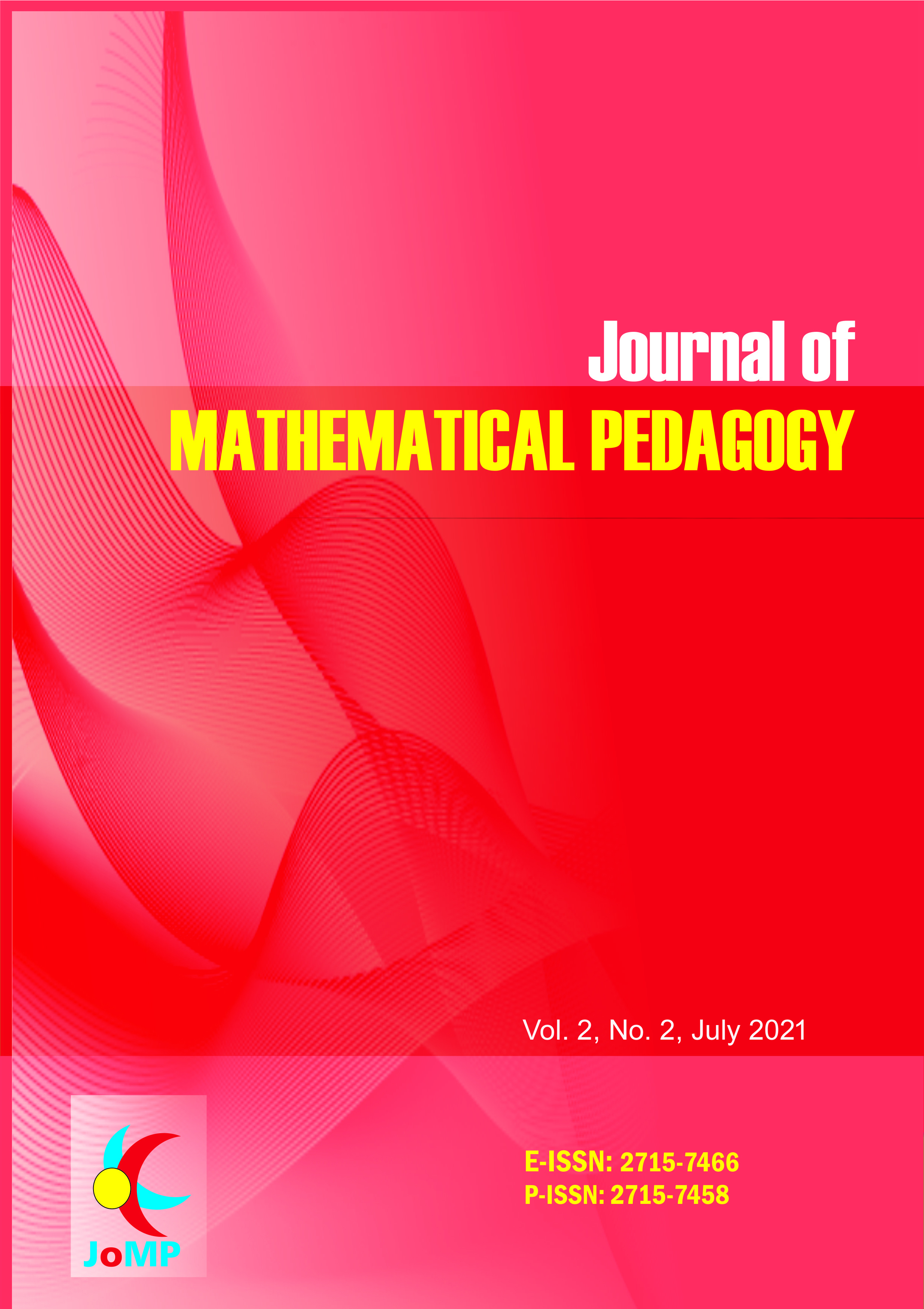Creative Thinking Ability of Visual-Dominant and Visual-Kinesthetic Students in Solving Statistics Problems
DOI:
https://doi.org/10.26740/jomp.v2n2.p40-51Keywords:
Creative thinking ability, statistical problem solving, visual-dominant learning style, visualkinesthetic learning styleAbstract
Creative thinking ability is a personal ability to carry out mental activities to produce an innovative new product. This study aims to analyze the level of creative thinking ability (LCT) of students with visual-dominant and visual-kinesthetic learning styles in solving statistics problems. Participants of this qualitative research are two junior high school students in 8th grade. The participant selection using purposive sampling technique, namely subjects who have a visual-dominant and visual-kinesthetic learning style. The instrument consisted of a learning styles questionnaire, the statistical problem-solving test, and task-based interviews. The indicators used to assess creative thinking products include fluency, flexibility, and originality. The data collected to be analyzed using the data source triangulation technique (reducing, presenting, verifying, and conclusions). The results showed that students who had a visual-dominant learning style met the indicators of fluency and originality. So, he was categorized at LCT 3 (creative). Meanwhile, students who have a visual-kinesthetic learning style only meet fluency indicators, so he was categorized at LCT 1 (almost not creative).
References
Besancon, M. & Lubart, T. (2008). Differences In The Development of Creative Competencies In
Children Schooled In Diverse Learning Environments. Learning and Individual Differences, 18(4), 381-389. https://doi.org/10.1016/j.lindif.2007.11.009
DePorter, B. & Hernacki, M. (2002). Quantum Learning: Membiasakan Belajar Nyaman dan Menyenangkan. Bandung: Kaifa.
DePorter, B., Reardon, M., & Singer-Nourie, S. (2010). Quantum Teaching: Mempraktikan Quantum Learning di Ruang-ruang Kelas. Bandung: Kaifa.
Febrianti, V. & Chotimah, S. (2020). Analisis Kesulitan pada Materi Statistika Kelas VII Siswa SMP. Jurnal Pembelajaran Matematika Inovatif, 3(5), 559-566. http://dx.doi.org/10.224/jpmi.v3i5.p%25p
Hatami, S. (2013). Learning Styles. ELT Juornal, 67(4), 488-490. https://doi.org/10.1093/elt/ccs083
Hurlock, E. B. (1999). Perkembangan Anak Jilid 2. Jakarta: Penerbit Erlangga.
Kementerian Pendidikan dan Kebudayaan. (2014). Konsep dan Implemetasi Kurikulum 2013, (Online), (https://www.kemdikbud.go.id), diakses 3 Mei 2021.
Macleod, H. (2009). Ignore Everybody: and 39 Other Keys to Creativity. New York: Penguin Group (USA).
Mukti, A. A. B. & Soedjoko, E. (2021). Kemampuan Siswa pada Aspek Berpikir Kreatif Ditinjau dari Gaya Belajar Melalui Pembelajaran Problem PosingBerbasis Open-Ended Problem. PRISMA, Prosiding Seminar Nasional Matematika, 4. Semarang: State University of Semarang.
O'Brien, L. (1989). Learning Styles: Make the Student Aware. NASSP Buletin, (Online), (https://journals.sagepub.com) diakses 3 Juni 2021.
Oztop, P. & Gummerum, M. (2020). Group Creativity in Children and Adolescents. Cognitive Development, 56(1). https://doi.org/10.1016/j.cogdev.2020.100923
Pehkonen, E. (1997). The State of Art in Mathematical Creativity. ZDM. 29(3), 63-67. https://doi.org/10.1007/s11858-997-0001-z
Polya, G. (1957). How to Solve It: A New Aspect of Mathematical Method. United States of America: Princeton University Press.
Richardo, R., Maryadi, Saputro, D. R. S. (2014). Tingkat Kreativitas Siswa dalam Memecahkan Masalah Matematika Divergen Ditinjau dari Gaya Belajar Siswa. Jurnal Elektronik Pembelajaran Matematika, 2(2), 141-151.
Rott, B. (2012). Models of The Problem Solving Process a Discussion Refferring to The Processes of Fifth Graders. Proceedings from the 13th ProMath Conference. Bergqvist: UMERC.
Silver, E. A. (1997). Fostering Creativity Through Instruction Rich in Mathematical Problem. The International Journal on Mathematics Education, 29(3). https://doi.org/10.1007/s11858-997-0003-x
Siswono, T. Y. E. (2004). Identifying Creative Thinking Process of Students Through Mathematics Problem Posing. International Conference on Statistics and Mathematics and Its Application in the Development of Science and Technology. Bandung: Universitas Islam Bandung.
Siswono, T. Y. E. (2008). Penjejangan Kemampuan Berpikir Kreatif dan Identifikasi Tahap Berpikir Kreatif Peserta Didik dalam Memecahkan dan Mengajukan Masalah Matematika. Jurnal Pendidikan Matematika "Mathedu", 3(1), 41-52.
Siswono, T. Y. E. (2018). Pembelajaran Matematika Berbasis Pengajuan dan Pemecahan Masalah. Bandung: Remaja Rosdakarya.
Siswono, T. Y. E. (2019). Paradigma Penelitian Pendidikan. Bandung: Remaja Rosdakarya.
Widayanti, F. D. (2013). Pentingnya Mengetahui Gaya Belajar Siswa dalam Kegiatan Pembelajaran di Kelas. Journal of Educational Innovation, 2(1), 7-21.
 Abstract views: 310
,
Abstract views: 310
, PDF Downloads: 173
PDF Downloads: 173





